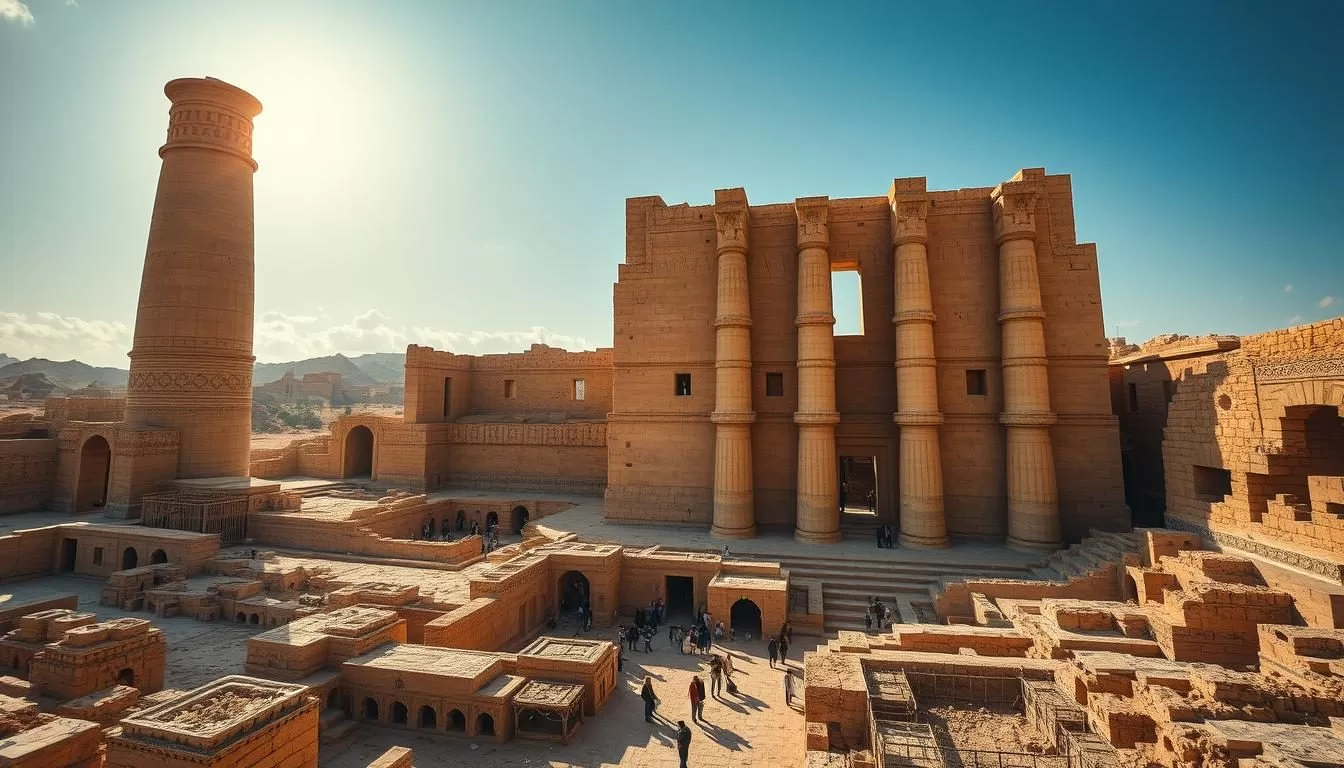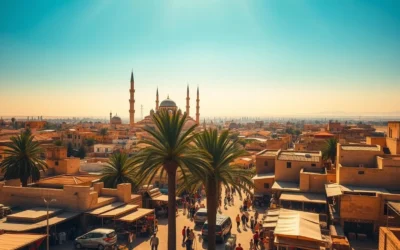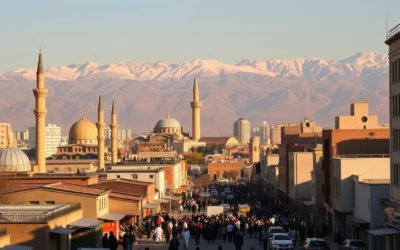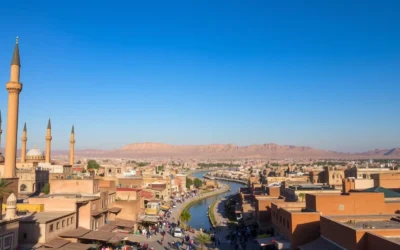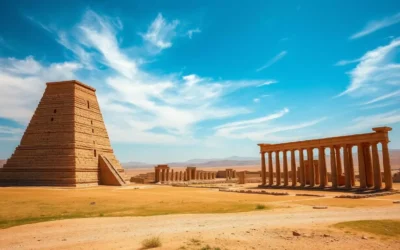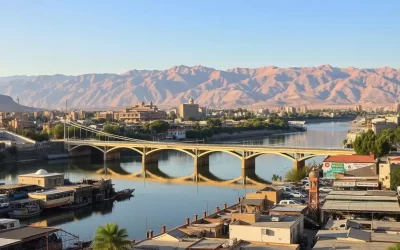✓ Accommodations✓ Flights✓ Rental Cars
Step back in time and explore the rich history of an ancient city that once thrived as the capital of the Kassite Dynasty. Founded in the early 14th century BC, this archaeological site offers a glimpse into a civilization that shaped the cultural heritage of the region.
Located just 30 kilometers west of Baghdad, this historic location is easily accessible, making it a perfect day trip for those eager to uncover the secrets of the past. The site is home to the impressive Ziggurat, a towering structure dedicated to Enlil, a significant Babylonian god.
Whether you’re a history enthusiast or a casual visitor, this ancient city promises a unique travel experience. From its royal inscriptions to its ceremonial objects, every corner tells a story of a bygone era. Plan your visit between November and April for the most comfortable weather, and prepare to be amazed by the beauty and architecture of this timeless destination.
Introduction to Dur-Kurigalzu and Its Ancient Heritage
Walk through the remnants of a place where history comes alive. This ancient city, once a thriving center of the Kassite Dynasty, offers a window into a civilization that shaped the world. Its towering ziggurat, standing at 170 feet, is a testament to the architectural brilliance of the 14th century BCE.
As you explore the site, you’ll find yourself surrounded by ruins that tell stories of a bygone era. The ziggurat, dedicated to the Babylonian god Enlil, is among the best-preserved structures of its kind. This archaeological site is not just a collection of stones; it’s a journey through time.
Setting the Scene for Your Adventure
Imagine standing in a location where kings once walked and ceremonies were held. The beauty of this place lies in its ability to transport you to another world. Every corner of the city reveals something new, from royal inscriptions to ceremonial objects.
Why This Ancient City Captivates You Today
What makes this ancient city so captivating? It’s the blend of history, culture, and architecture that leaves a lasting impression. Whether you’re a history buff or a casual traveler, the experience of walking through these ruins is unforgettable.
Understanding the Historical Significance
Discover the deep roots of a civilization that shaped the ancient world. This place offers a unique window into the past, where every stone tells a story of innovation and culture.
Founded in the 14th century BC, this city served as the capital of the Kassite Dynasty for nearly 400 years. Its strategic location and advanced urban planning made it a hub of activity and a center of learning.
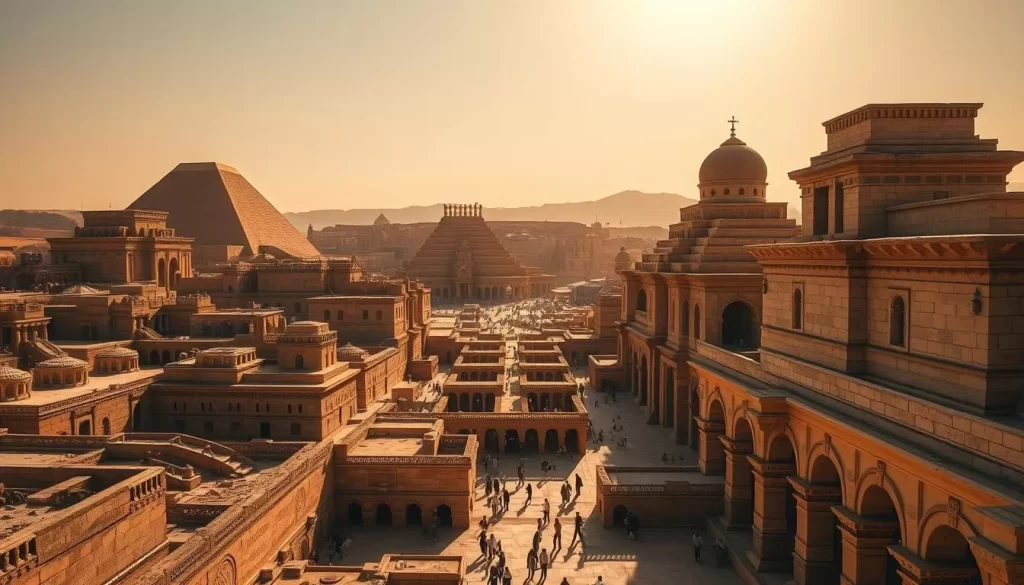
A Glimpse into Mesopotamian Civilization
This site is a testament to the ingenuity of Mesopotamian culture. From its writing systems to its monumental structures, it reflects a society that valued knowledge and creativity.
Excavations have uncovered artifacts like royal inscriptions and ceremonial objects, offering insights into daily life and governance. These findings highlight the cultural impact of this ancient civilization.
Architectural Marvels and Timeless Ruins
The Ziggurat of Dur-Kurigalzu, built in the early 14th century BC, stands as a symbol of Mesopotamian architecture. Its towering structure and intricate design showcase the engineering skills of the time.
Other ruins, like the palace complex, reveal advanced urban planning with large courtyards and residential areas. These structures continue to inspire awe and admiration today.
| Feature | Description | Significance |
|---|---|---|
| Ziggurat | 170 feet tall, dedicated to Enlil | Religious and architectural center |
| Palace Complex | Includes courtyards and audience halls | Hub of governance and royal life |
| Artifacts | Royal inscriptions, ceremonial objects | Insights into culture and daily life |
This heritage site is not just a collection of ruins; it’s a journey through time. Its enduring legacy continues to captivate visitors, offering a glimpse into a world that shaped human history.
Dur-Kurigalzu, Iraq: Best Things to Do – Top Picks
Uncover the wonders of an ancient world that still echoes with stories of its past. This place offers a variety of experiences tailored to every traveler, whether you’re a history buff, a culture enthusiast, or simply looking for a unique adventure.
Curated Experiences for Every Traveler
Start your journey at the towering Ziggurat, a marvel of architecture that has stood the test of time. This site is not just a structure; it’s a gateway to understanding the civilization that once thrived here.
Explore the palace complex, where large courtyards and audience halls reveal the grandeur of royal life. Excavations continue to uncover more about this heritage site, offering fresh insights with every visit.
- Immersive Tours: Join a guided tour to learn about the history and significance of each ruin. A knowledgeable guide can bring the stories of this city to life.
- Hidden Treasures: Venture off the beaten path to discover lesser-known areas. These spots offer a quieter, more personal connection to the past.
- Local Encounters: Engage with the community to experience the culture that has evolved over centuries. Visit nearby markets to see how traditions are kept alive today.
Each activity is designed to make your trip unforgettable. From the grandeur of the Ziggurat to the charm of local streets, this location promises a journey through time and history.
Exploring Iconic Archaeological Sites
Step into a world where ancient wonders stand tall, telling tales of a civilization long past. This archaeological site is a treasure trove of history, offering a glimpse into a time when kings ruled and gods were worshipped.
As you explore, you’ll encounter structures that have stood the test of time, each with its own story to tell. From the towering Ziggurat to the hidden royal tombs, every corner of this place reveals something new and fascinating.
The Legendary Ziggurat and Royal Tombs
The Ziggurat, standing at 57 meters tall, is a marvel of architecture and a symbol of religious devotion. Dedicated to the Babylonian god Enlil, it served as the spiritual center of the ancient city. Its intricate design and sheer size continue to awe visitors today.
Nearby, the royal tombs offer a glimpse into the lives of the elite. Excavations have uncovered treasures like ceremonial objects and royal inscriptions, shedding light on the culture and governance of the time. These findings highlight the importance of this site in the ancient world.
Uncovering the Lost Structures
Beyond the Ziggurat and tombs, there are lost structures waiting to be discovered. These ruins, though less known, are equally significant. They tell the story of a civilization that thrived for centuries, leaving behind a legacy of innovation and beauty.
Ongoing restoration efforts aim to preserve these heritage sites for future generations. Archaeologists continue to uncover new details, making each visit a unique experience. Whether you’re a history enthusiast or a casual traveler, this place promises to leave a lasting impression.
Discovering Hidden Gems and Local Culture
Venture beyond the well-trodden paths and uncover the hidden treasures of this ancient city. While the towering Ziggurat and royal tombs draw crowds, there’s a wealth of secret spots that offer a deeper connection to the culture and history of this place.
These lesser-known areas reveal the everyday life of a civilization that thrived centuries ago. From quiet residential quarters to overlooked ruins, each site tells a story of the people who once called this city home.
Secret Spots Off the Regular Tourist Path
One of the most rewarding experiences is exploring the residential areas. These spaces give you a glimpse into how ordinary people lived, worked, and interacted. You’ll find remnants of homes, workshops, and even small marketplaces that were once bustling with activity.
Another hidden gem is the network of narrow streets that wind through the site. These pathways, often overlooked by visitors, lead to quiet corners where you can truly appreciate the beauty and architecture of the ancient city.
For a more immersive experience, seek out the smaller, less-visited ruins. These structures may not be as grand as the Ziggurat, but they offer a more intimate connection to the past. You’ll feel as though you’ve stepped into a secret world, untouched by time.
To make the most of your visit, consider hiring a local guide. They can lead you to these hidden spots and share stories that bring the history to life. Whether you’re a seasoned traveler or a first-time visitor, these off-path attractions will leave a lasting impression.
Immersing Yourself in Bustling Markets and Traditional Streets
Dive into the heart of bustling markets and ancient streets, where every corner tells a story of a vibrant past. These places are not just about shopping; they’re a window into the culture and history of the city. From colorful bazaars to narrow alleys, you’ll find yourself surrounded by the sights, sounds, and smells of a lively world.
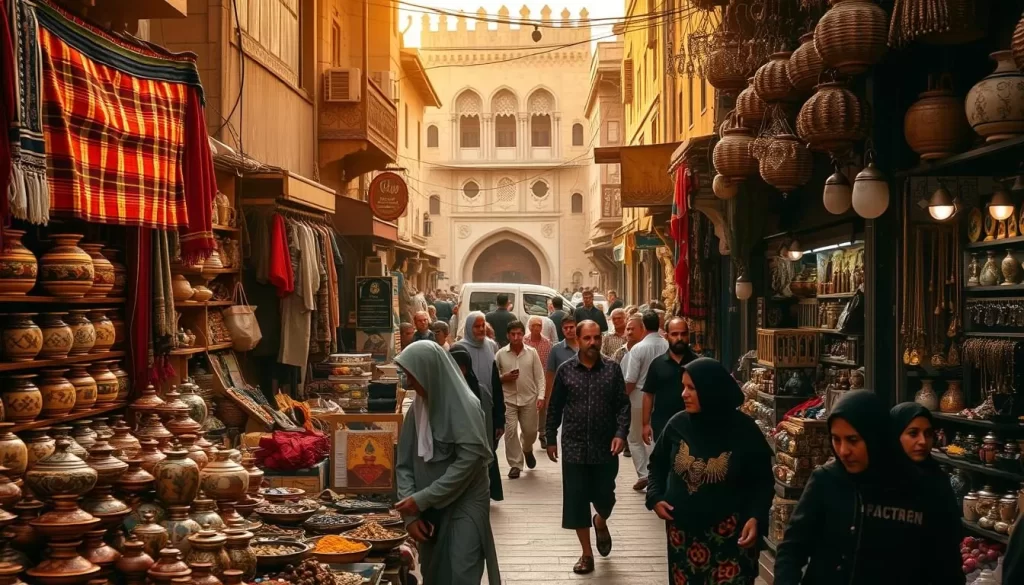
Exploring Vibrant Bazaars and Souks
Step into the vibrant bazaars, where local crafts, spices, and textiles fill the stalls. These markets are a treasure trove of unique finds, from handmade carpets to intricate copper works. Each item tells a story of the culture and traditions that have been passed down through generations.
As you wander through the souks, you’ll notice the lively atmosphere. Vendors call out to passersby, and the air is filled with the aroma of fresh spices. This is more than just a shopping experience; it’s a chance to connect with the history of the area.
For a deeper understanding, consider hiring a local guide. They can share insights into the significance of each market and help you navigate the bustling streets. Whether you’re looking for souvenirs or simply soaking in the beauty of the place, these bazaars are a must-visit.
Don’t forget to haggle! It’s a traditional part of the shopping experience and a fun way to engage with local vendors. Just remember to be respectful and enjoy the process. These interactions are what make your visit truly memorable.
Visiting Museums and Heritage Centers
Immerse yourself in the rich tapestry of history by exploring museums and heritage centers. These places are more than just buildings; they are gateways to understanding the civilizations that shaped our world. From ancient artifacts to interactive displays, every exhibit tells a story of a time long past.
Artifacts That Tell the Story of Ancient Civilizations
As you walk through these museums, you’ll encounter artifacts that bring history to life. Sculptures, pottery, and ancient tools offer a tangible link to the past. These items are not just objects; they are pieces of a larger narrative that reveal how people lived, worked, and thrived.
One of the most fascinating aspects is the variety of artifacts on display. From royal inscriptions to ceremonial objects, each piece provides a glimpse into the culture and daily life of ancient civilizations. These treasures are carefully preserved to ensure they continue to educate and inspire visitors for generations to come.
Interactive Displays and Educational Tours
Modern museums go beyond static displays. Interactive exhibits allow you to engage with history in a hands-on way. Touchscreens, virtual reality, and multimedia presentations make the past come alive, offering a deeper understanding of the world that once was.
Guided tours add another layer to your visit. Knowledgeable guides share stories and insights that you might miss on your own. These tours are designed to be both educational and engaging, making them perfect for visitors of all ages. Whether you’re a seasoned traveler or a first-time tourist, these experiences will leave a lasting impression and you can learn more about the significance of cuneiform inscriptions in understanding ancient practices.
Heritage centers also play a crucial role in preserving the history of the area. They serve as repositories of cultural and historical narratives, ensuring that the stories of the past are not forgotten. Through exhibitions and educational programs, these centers make ancient history accessible and engaging for everyone.
Planning Your Daily Itinerary
Crafting the perfect day in this historic place requires thoughtful planning and timing. To make the most of your visit, it’s essential to know the best times to explore each attraction. This ensures you avoid crowds and extreme weather while maximizing your experience.
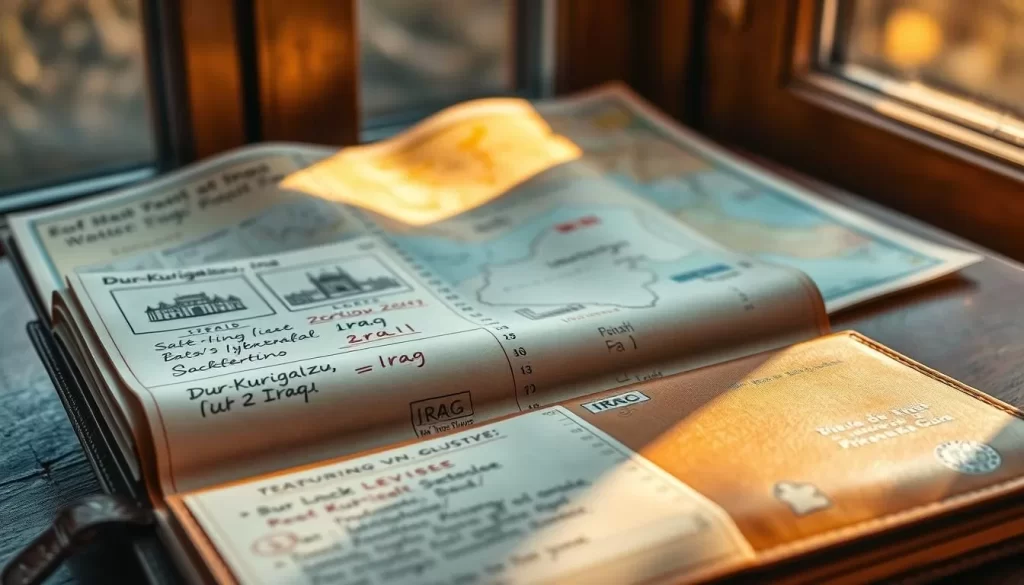
Optimal Visiting Hours
Mornings and late afternoons are ideal for visiting outdoor sites. The cooler temperatures and softer light create a more comfortable and visually stunning experience. For indoor attractions like museums, midday is often the best time to avoid peak hours.
Seasonal considerations also play a role. The months from November to April offer the most pleasant weather for exploring this city. During these months, you’ll enjoy mild temperatures and clear skies, perfect for outdoor adventures.
Structuring Your Day
Start your day early with a visit to the most popular sites. This allows you to enjoy these attractions before they get crowded. Midday can be reserved for indoor activities or a leisurely lunch at a local café.
In the afternoon, explore hidden gems and lesser-known areas. These quieter spots offer a more personal connection to the history and beauty of the place. End your day with a stroll through bustling markets or a relaxing evening at a local shrine.
By planning your day this way, you’ll ensure a balanced and memorable experience. Whether you’re a first-time visitor or a seasoned traveler, this approach will help you make the most of your time in this historic city.
Navigating the City: Transportation and Access Tips
Getting around this historic place is easier than you might think. Whether you prefer private car hires, taxi services, or organized tours, there are plenty of options to suit your needs. Planning ahead ensures a smooth and enjoyable experience.
Efficient Ways to Get Around
Private car hires offer flexibility and convenience, allowing you to explore at your own pace. Taxi services are widely available and provide a quick way to reach major attractions. Organized tours, on the other hand, offer guided insights into the history and significance of each site.
When using public transportation, always carry your identification and necessary travel documents. Security checks are common, and being prepared can save you time and hassle. For more information on historical transportation methods, check out this detailed resource.
| Transport Option | Benefits | Considerations |
|---|---|---|
| Private Car Hire | Flexibility, personalized routes | Requires local driving knowledge |
| Taxi Services | Quick, readily available | May be more expensive |
| Organized Tours | Guided insights, structured itinerary | Less flexibility in schedule |
By choosing the right transportation way, you can make the most of your visit. Whether you’re a solo traveler or part of a group, these tips will help you navigate the city with ease. Enjoy your journey through this historic place!
Cultural Encounters and Experiential Tours
Immerse yourself in the vibrant traditions of a place where history and culture intertwine. This city offers unique opportunities to connect with local customs and gain a deeper understanding of its rich heritage. Whether you’re exploring bustling streets or joining guided tours, every experience brings you closer to the heart of this historic site.
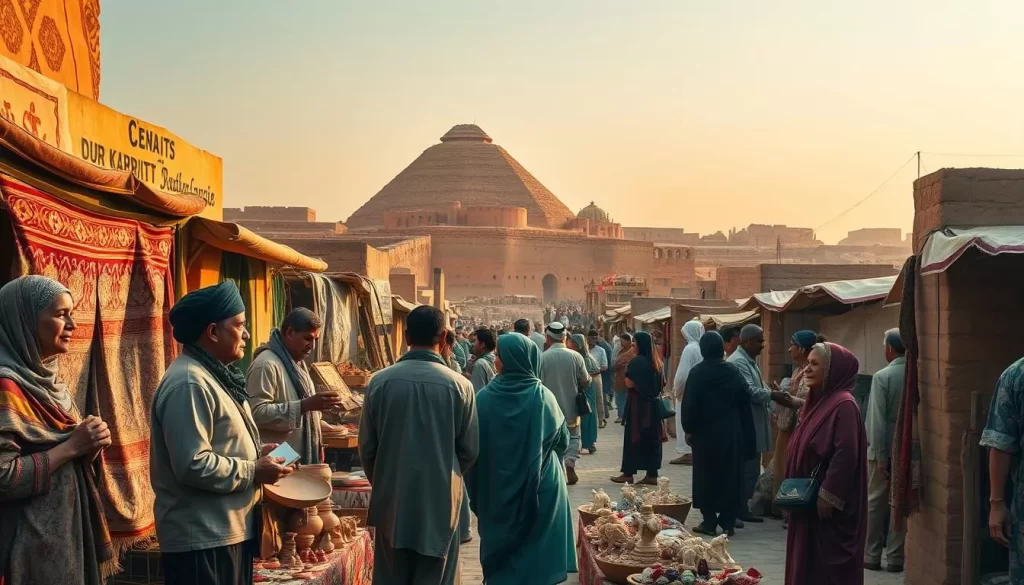
Connecting with Local Traditions
One of the most rewarding aspects of visiting this place is the chance to engage with local traditions. Small-group tours often include visits to traditional artisans, where you can witness the creation of handmade crafts. These interactions provide a personal connection to the history and culture of the city.
For those interested in religious practices, pilgrimages to nearby shrines offer a profound experience. These journeys not only deepen your understanding of local beliefs but also allow you to see the site through the eyes of those who live here. The protection of cultural heritage plays a crucial role in preserving these traditions for future generations.
- Immersive Tours: Join a guided tour to learn about the history and significance of each ruin. A knowledgeable guide can bring the stories of this city to life.
- Hidden Treasures: Venture off the beaten path to discover lesser-known areas. These spots offer a quieter, more personal connection to the past.
- Local Encounters: Engage with the community to experience the culture that has evolved over centuries. Visit nearby markets to see how traditions are kept alive today.
By participating in these experiential tours, you’ll gain a deeper appreciation for the history and culture of this place. Whether you’re a seasoned traveler or a first-time visitor, these encounters will leave a lasting impression.
Photography Spots and Scenic Views
Capture the essence of history through your lens as you explore this ancient place. From towering monuments to sweeping landscapes, every corner offers a picture-perfect moment. Whether you’re an amateur or a professional, these tips will help you take stunning shots that preserve the beauty of this historic site.
Capturing Majestic Landscapes and Monuments
The Ziggurat, standing at 171 feet, is a must-capture landmark. Its towering structure and intricate design make it a striking subject for your photos. For the best lighting, visit during sunrise or sunset when the golden hues enhance its grandeur.
Surrounding landscapes also offer breathtaking backdrops. Wide-angle shots of the open plains or close-ups of ancient carvings can add depth to your portfolio. Don’t forget to explore the palace complex, where large courtyards and audience halls provide unique framing opportunities.
Tips for the Perfect Travel Shot
Timing is everything. The golden hours—just after sunrise and before sunset—provide soft, warm light that enhances textures and details. Avoid midday when harsh shadows can ruin your shots.
Composition matters. Use the rule of thirds to balance your photos. Place the Ziggurat or other landmarks off-center to create a more dynamic image. Experiment with different angles, such as low shots to emphasize height or aerial views for a broader perspective.
“Photography is the art of capturing moments that tell a story. Every shot you take here is a piece of history preserved forever.”
| Tip | Description |
|---|---|
| Golden Hours | Shoot during sunrise or sunset for optimal lighting. |
| Rule of Thirds | Balance your composition by placing subjects off-center. |
| Experiment with Angles | Try low or aerial shots for unique perspectives. |
For more inspiration on capturing the beauty of this historic place, explore the impressive ruins and let your creativity flow. Whether you’re documenting your journey or creating art, this city offers endless opportunities for unforgettable photography.
Essential Safety and Travel Considerations
Ensure your journey through historic sites is both safe and enriching with these essential tips. Exploring ancient ruins can be an incredible experience, but it’s important to prioritize your safety and respect local customs. Here’s how you can make the most of your visit while staying secure.
Staying Safe While Exploring Ancient Ruins
When visiting ancient sites, always stay on marked paths. These areas are often fragile, and wandering off can damage the ruins or put you at risk. Wear sturdy shoes to navigate uneven terrain safely, and carry water to stay hydrated, especially in warmer months.
Be mindful of your surroundings. Keep an eye on your belongings and avoid carrying large amounts of cash. If you’re traveling alone, let someone know your plans and expected return time. These simple steps can help ensure a smooth and secure experience.
Local Insights for a Secure Journey
Respecting local customs is key to a positive travel experience. Dress modestly, especially when visiting religious or cultural sites. This shows respect for the community and helps you blend in more easily.
Stay informed about local travel advisories and security conditions. Check with your embassy or consulate for updates before your trip. Travel insurance is highly recommended to cover unexpected events, medical needs, or travel disruptions.
For a deeper understanding of the region’s history, consider visiting Ur, an ancient Sumerian city. This site offers insights into Mesopotamian civilization and is a must-see for history enthusiasts.
By following these tips, you’ll not only protect yourself but also enhance your overall enjoyment of this historic place. Whether you’re exploring the ruins of a city or engaging with local traditions, being prepared ensures a memorable and secure journey.
Conclusion
As your journey through this historic place comes to an end, reflect on the timeless stories etched into its ancient stones. From the towering ziggurat to the hidden residential quarters, every corner of this city offers a glimpse into a civilization that shaped the world.
Exploring these ruins is more than just a visit; it’s a connection to the past. The intricate architecture, royal inscriptions, and ceremonial objects all tell a story of innovation and culture. These experiences leave a lasting impression, inspiring you to delve deeper into history.
Plan your own adventure and share this article with friends who love exploring ancient wonders. Whether you’re a history enthusiast or a curious traveler, this destination promises a journey through time that you’ll never forget.
The above is subject to change.
Check back often to TRAVEL.COM for the latest travel tips and deals.
